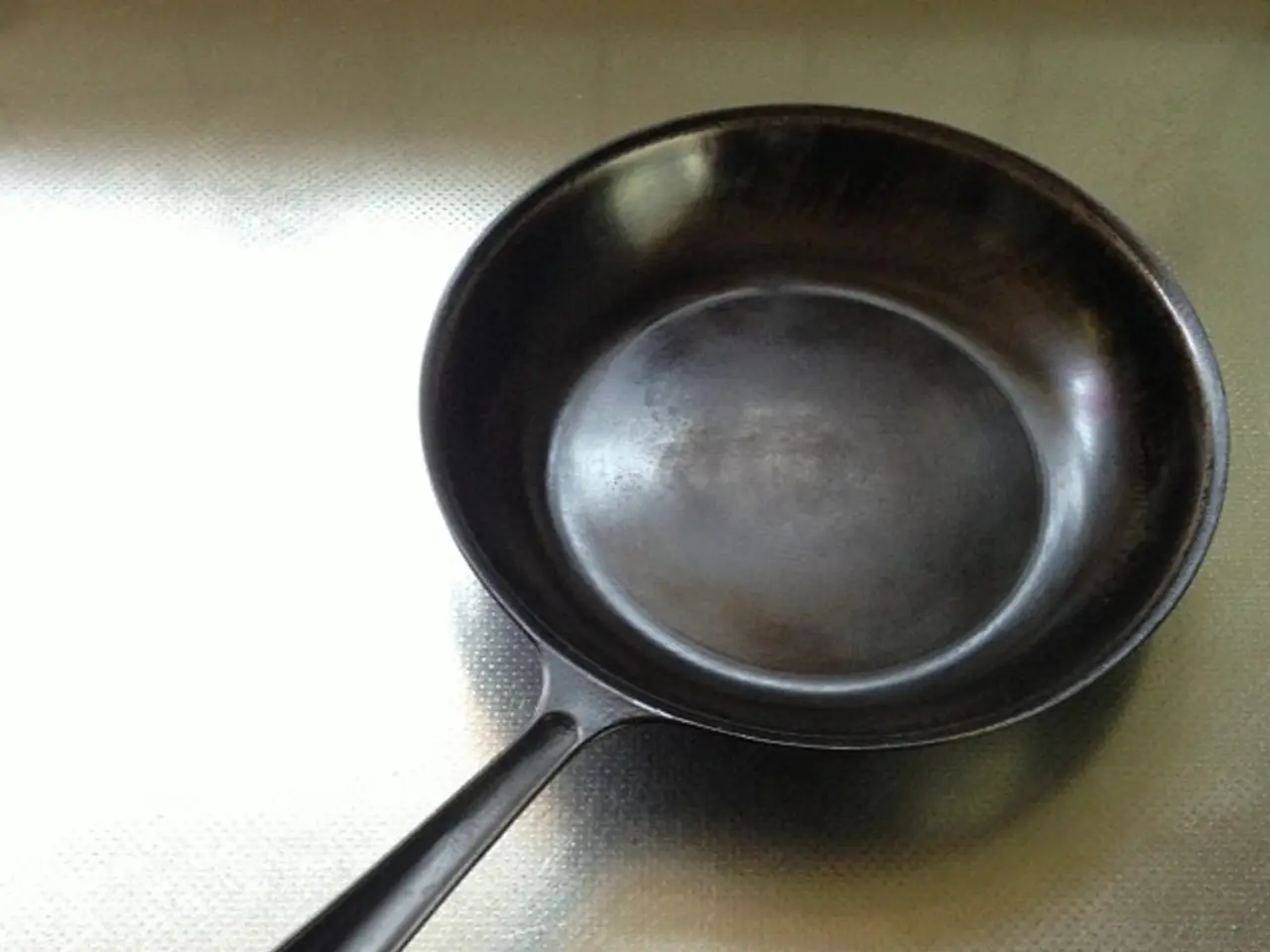Refrigerator coated with scratched non-stick material - Potential health risks examined
In the kitchen, non-stick pans have become a staple for cooking delicate dishes. However, recent concerns have been raised about the potential dangers associated with these pans, particularly when they become scratched.
### Health Risks
Many traditional non-stick pans use PTFE coatings such as Teflon, which may contain per- and polyfluoroalkyl substances (PFAS). These chemicals, often referred to as "forever chemicals," persist in the environment and accumulate in the human body, posing potential long-term health risks. Scratches can cause the coating to flake or chip, potentially releasing harmful substances or small particles into food.
In ceramic-coated pans, once scratched or worn, the underlying aluminum or metals may leach into food. These metals sometimes include toxic elements like arsenic, lead, or cadmium, posing further health risks.
### Food Safety
Scratched pans can shed coating particles into food, which may introduce toxins or metals depending on the pan type. Additionally, scratches reduce the effectiveness of the non-stick layer, causing food to stick, burn, or cook unevenly, which can affect food quality and safety.
### Pan Lifespan and Performance
Non-stick coatings, whether traditional PTFE or ceramic, wear out over time. Scratches accelerate this deterioration, significantly reducing the lifespan of the pan. Once the non-stick surface is scratched, it usually cannot be restored, necessitating replacement to maintain cooking performance.
### Summary Table
| Concern | Traditional PTFE Non-stick | Ceramic Non-stick | |---------------------------|--------------------------------------------|--------------------------------------| | Health risks | PFAS exposure; toxic fume risk when overheated; flakes potential | Metal leaching (Al, Pb, Cd) once scratched | | Food safety | Coating flakes in food | Exposure to underlying metals; loss of non-stick properties | | Lifespan | Months to a few years; damaged by scratches | About 1 year; coating wears and scratches quickly | | Repairability | No repair; replace if scratched | No repair; replace when worn or scratched |
### Recommendations
To prevent scratches, it is recommended to avoid using metal utensils and abrasive cleaners. If a pan has visible scratches, flaking, or significant coating wear, it should be discontinued to minimize health risks and ensure food safety.
When a pan shows signs of wear, it is often safer to replace it rather than continuing to use it, especially if it has traditional PTFE coatings known to contain PFAS or if it is ceramic-coated and showing signs of wear.
In conclusion, continuing to use scratched non-stick pans poses potential health risks from chemical exposure and metal leaching, undermines food safety, and significantly shortens the pan's functional lifespan. Replacing scratched pans is the safest choice for health and cooking performance. Non-stick pans should not be used beyond their useful life, even if they are still functional.
What type of substances may traditional non-stick pans contain that could pose long-term health risks, and what happens when these pans get scratched? Scratched non-stick pans can potentially release harmful substances or small particles into food, such as per- and polyfluoroalkyl substances (PFAS), which are often found in traditional non-stick coatings like Teflon.




